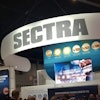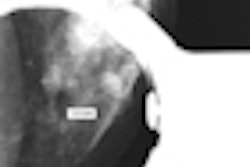A software application available on the iPhone can detect or exclude significant stenosis on coronary CT angiography (CCTA) studies, according to research presented earlier this month at the American College of Cardiology (ACC) annual meeting in Atlanta.
A multi-institutional research team found that the app yielded 100% sensitivity, 78% specificity, and 100% negative predictive value in predicting stenosis greater than 50%, comparable to previous multicenter studies employing 3D workstation software. The group also found that heart rate and heart rate variability were the factors most likely to affect diagnostic performance of the technique.
"Interpreting coronary CTA on a mobile device using this software has very high diagnostic accuracy to exclude coronary artery disease, and may represent a future direction of imaging," said presenter Dr. Troy LaBounty, an assistant professor of medicine at Weill Cornell Medical College in New York City.
Seeking to identify factors that impact the diagnostic performance of CCTA on a handheld device, the research team selected 102 patients from the recent ACCURACY trial who had received both 64-detector-row CCTA and invasive quantitative coronary angiography (QCA). The patients -- 60% of whom were male -- had a mean age of 57 ± 9 years.
All CCTA studies were read using MIM Pro software (MIMvista, Cleveland) on an iPhone 3G. Two blinded readers independently examined the CCTA studies to diagnose the presence or absence of coronary stenosis of 50% or greater on a per-artery and per-patient basis. A third reader provided concordance.
The results were compared to QCA findings, which served as the gold standard for the study. Twenty-six patients and 40 arteries had stenoses of 50% or greater.
Interpretation accuracy using iPhone software
|
Patient heart rate and heart rate variability were factors that affected diagnostic performance, according to LaBounty. For patients with heart rates less than 65 beats per minute (bpm), 88 (92%) of 96 cases were interpretable, compared with two (33%) of six patients with a heart beat of 65 bpm or more (p < 0.01).
Sensitivity was 100% in both categories. Specificity, however, dropped from 82% (58/71) in patients with heart rates less than 65 bpm to 20% (1/5) in patients with heart rates of 65 bpm or more (p < 0.01).
For patients with heart rate variability of less than 10 bpm, 86 (91%) of 95 cases were interpretable, compared with four (57%) of seven who had variability of 10 or more bpm (p = 0.03). Sensitivity was 100% in both groups, but specificity dipped from 80% (56/70) in the low-variability group to 50% (3/6) in the high-variability group (p = 0.12).
Calcium score and body mass index did not affect performance. LaBounty noted that the diagnostic performance factors were applicable to reading studies on both handheld devices and dedicated workstations.
The use of handheld devices offers a lot of potential at the point of care, LaBounty told AuntMinnie.com.
"It could permit us to demonstrate the images at the bedside or in the clinic, and also permit us to share images with house staff on rounds for teaching purposes," he said. "In addition, I believe in the near future we will be able to interpret studies using similar remote hardware [such as the iPad] to potentially improve efficiency and access to patient images."
By Erik L. Ridley
AuntMinnie.com staff writer
March 29, 2010
Related Reading
FDA action may rain on iPhone's medical imaging parade, March 23, 2010
Handheld devices show promise in emergency radiology, January 21, 2010
CT scans sent to iPhone can make appendicitis diagnoses, December 2, 2009
Medical apps on iPhone demonstrate value, potential, November 30, 2009
Handheld devices show promise for patient education, June 8, 2009
Copyright © 2010 AuntMinnie.com




















